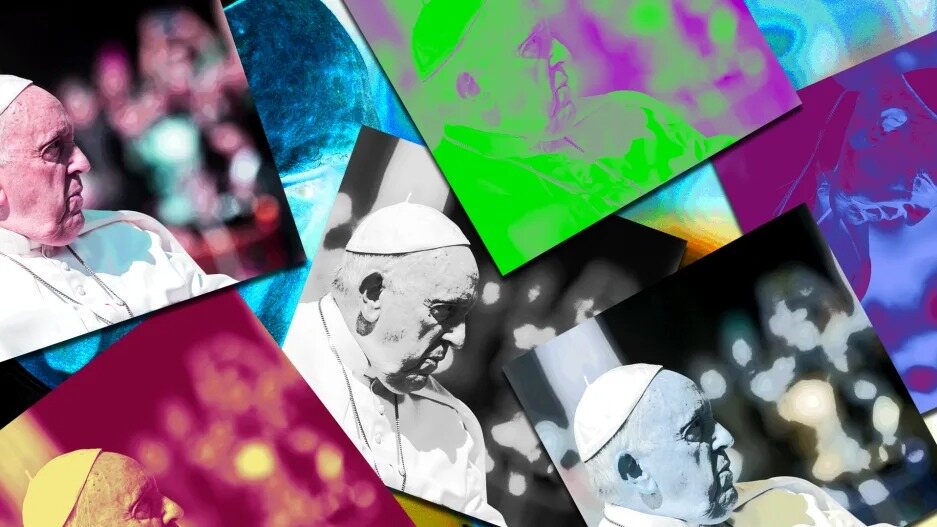- | 9:00 am
The guy behind ‘Balenciaga Pope’ wants people to stop stealing his AI-generated images
Pablo Xavier says a user is incorrectly claiming ownership of images showing Elon Musk embracing robots, highlighting the need for better watermarking technologies.

Two months ago, Pablo Xavier’s AI-generated image of Pope Francis wearing a Balenciaga coat took the internet by storm, showcasing the technology’s ability to turn anyone into a popular creator.
Now the 31-year-old construction worker from the Chicago area (who declined to share his full name over fears that he could be attacked for making the images) is seeing the flip side of that access: that not everyone is going to credit the human behind the image.
Last week, Daniel Marven—a South African CEO of a construction company, as it happens—tweeted a series of four images of Elon Musk kissing female robots, which were then picked up by a number of media outlets.
The problem? The images were taken from Pablo’s Instagram account, and neither Marven nor the media outlets gave him credit.
“I didn’t even know until someone told me,” Pablo says. “I was like, ‘What the heck?’ He pretty much used it to boost his company, which is fine. But I just wish they would have just asked him: ‘Hey, show us your generates, show us how you got it.’”
Every image created by Midjourney has an associated seed number, which is used to create the initial image grids. Seed numbers are vital parts of the image-generation process: They trigger the creation of noise, which coalesces into recognizable images using AI. As the original creator of the image, Pablo is able to supply those seed numbers. Marven, he says, is not. (Pablo shared screenshots with Fast Company from the Midjourney Discord showing his creation process as evidence of his claim to the images.)
Marven, when contacted by Fast Company, initially claimed the images were his creation. “It’s AI generated images. That portrays Elon Musk[’s] possibility of creating such robotics in real life. Hence Elon got a robot,” he wrote via Twitter DM. Asked directly if he made the images, he replied “Yes.” When it was put to him that Pablo Xavier claimed ownership—and provided evidence—Marven stopped responding.
After Pablo voiced his frustrations on his Instagram account, some users commented that he is making a mountain out of a molehill, given that he didn’t generate the images himself but instead simply typed a prompt into Midjourney. “You’re right,” Pablo says. “But I also spent a lot of hours trying to get the right variation of this.”
Besides ensuring he gets credit for his labor, Pablo believes that linking his name to the images will help people identify that they’re fake—an ever-increasing concern in a week that saw a fake image of an explosion at the Pentagon move the stock market and OpenAI publish a new blog post calling for the creation of an AI global governance body.
Pablo, for his part, believes that after the success of his “Balenciaga Pope” stunt, people ought to recognize the AI component of any image he creates. (After this latest snafu with the Musk images, he watermarks his work.) “As soon as they see I made it, and as soon as they go through my whole profile, they’re going to see this is AI art,” he says. “With them, it’s kind of different. A lot of people who are claiming ownership don’t have anything else.”
The Musk images, like the Balenciaga Pope image in March, highlight to Pablo the need for regulation around generative AI—and in the case of Midjourney, a need for default watermarks. (Midjourney did not immediately respond to a request for comment on whether this is a planned feature.)
“Some people at Midjourney are talking about watermarks that are going to be automatically generated with these images,” Pablo says. “Please implement it so we can put our names on it.”






































